The Jagannath Temple in Puri is a famous Hindu temple dedicated to Jagannath and located in the coastal town of Puri in the strte of Orissa, India. The name Jagannath (Lord of the Universe) is a combination of the Sanskrit words Jagat (Universe) and Nath (Lord of) and also, the word "Jagannatha" is evolved from "Jagati" (Oriya: ଜଗତି) (as an elevated platform or "Ratnabedi" on which the wooden form of Jagannatha, Balabhadra and Subhadra are worshiped on or the temple or its precincts inside the "Narendra Pokhari" ) and "Natha" (Oriya: ନାଥ) (means "Lord"). The temple is an important pilgrimage destination for many Hindu traditions, particularly worshippers of Krishna and Vishnu, and part of the Char Dham pilgrimages that a Hindu is expected to make in one's lifetime .The temple was built in the 11th century atop its ruins by the progenitor of the Eastern Ganga dynasty, King Anantavarman Chodaganga Deva.The temple is famous for its annual Rath Yatra, or chariot festival, in which the three main temple deities are hauled on huge and elaborately decorated temple cars. Since medieval times, it is also associated with intense religious fervour.
View Larger Map The temple is sacred to the Vaishnava traditions and saint Ramananda who was closely associated with the temple. It is also of particular significance to the followers of the Gaudiya Vaishnavism whose founder, Chaitanya Mahaprabhu, was attracted to the deity, Jagannath, and lived in Puri for many years.
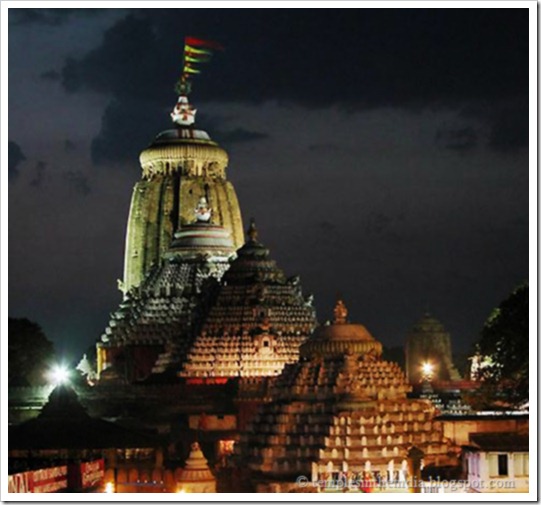
Deities
The central forms of Jagannath, Balabhadra and the goddess Subhadra constitute the trinity of deities sitting on the bejewelled platform or the Ratnavedi in the inner sanctum. The Sudarshan Chakra, idols of Madanmohan, Sridevi and Vishwadhatri are also placed on the Ratnavedi.The deities of Jagannath, Balabhadra, Subhadra and Sudarshan Chakra are made from sacred Neem logs known as Daru Bramha. Depending on the season the deities are adorned in different garbs and jewels. Worship of the deities pre-date the temple structure and may have originated in an ancient tribal shrine.
Jagannath Temple, Puri, Orissa
Featured in this video is Jagannath Temple, one of the most famous temples in Orissa state of India noted for its annual chariot or Rath Yatra festival.
Origins of the temple
According to recently discovered copper plates from the Ganga dynasty, the construction of the current Jagannath temple was initiated by the ruler of Kalinga, Anantavarman Chodaganga Dev.The Jaga mohan and the Vimana portions of the temple were built during his reign (1078 - 1148 CE). However, it was only in the year 1174 CE that the Oriya ruler Ananga Bhima Deva rebuilt the temple to give a shape in which it stands today.
Jagannath worship in the temple continued until 1558, when Orissa was attacked by the Afghan general Kalapahad. Subsequently, when Ramachandra Deb established an independent kingdom at Khurda in Orissa, the temple was consecrated and the deities reinstalled.
Legends
Legendary account as found in the Skanda-Purana, Brahma Purana and other Puranas and later Oriya works state that Lord Jagannath was originally worshipped as Lord Neela Madhav by a Savar king ( tribal chief ) named Viswavasu. Having heard about the deity, King Indrrdyumna sent a Brahmin priest, Vidyapati to locate the deity, who was worshipped secretly in a dense forest by Viswavasu. Vidyapati tried his best but could not locate the place. But at last he managed to marry Viswavasu's daughter Lalita . At repeated request of Vidyapti, Viswavasu took his son-in-law blind folded to a cave where Lord Neela Madhav was worshipped.Vidyapati was very intelligent. He dropped mustard seeds on the ground on the way. The seeds germinated after a few days, which enabled him to find out the cave later on. On hearing from him, King Indradyumna proceeded immediately to Odra desha (Orissa) on a pilgrimage to see and worship the Deity. But the deity had disappeared. The king was disappointed. The Deity was hidden in sand. The king was determined not to return without having a darshan of the deity and observed fast unto death at Mount Neela, Then a celestial voice cried 'thou shalt see him '. Afterwards the king performed a horse sacrifice and built a magnificent temple for Vishnu. Sri Narasimha Murti brought by Narada was installed in the temple. During sleep, the king had a vision of Lord Jaganrath. Also an astral voice directed him to receive the fragrant tree on the seashore and make idols out of it. Accordingly the king got the image of Lord Jagannath, Balabhadra, Subhadra and Chakra Sudarshan made out of the wood of the divine tree and installed them in the temple.
Indradyumna's prayer to Lord Brahma
King Indradyumna put up for Jagannath the tallest monument of the world. It was 1,000 cubits high. He invited Lord Brahma, the cosmic creator, consecrate the temple and the images. Brahma came all the way from Heaven for this purpose. Seeing the temple he was immensely pleased with him. Brahma asked Indradyumna as to in what way can he (Brahma) fulfill the king's desire, since was very much pleased with him for his having put the most beautiful Temple for Lord Vishnu. With folded hands, Indradyumna said, "My Lord if you are really pleased with me, kindly bless me with one thing, and it is that I should be issueless and that I should be the last member of my family." In case anybody left alive after him, he would only take pride as the owner of the temple and would not work for the society.
The episode of the Lord's grace during a war with Kanchi
At one time, a king of Kanchi in the down south remarked that the king of Orissa was a chandala (a man of very low caste or status) because, he performs the duties of a sweeper during the Car Festival. When this news reached the ears of the king of Orissa, he led an expedition to Kanchi. Before that, he implored the mercy of Lord Jagannath. The soldiers of Orissa marched towards Kanchi from Cuttack (then capital city of Orissa, located on the banks of Mahanadi, at a distance of 30 km from Bhubaneswar). It so happened that when the soldiers, headed by the king Purusottam Dev, reached a place near the Chilika lake, a lady, who was selling curd (a milk preparation, sour in taste) met him (the king) and presented a golden ring studded with precious gems and submitted. "My Lord, kindly listen to me. A little earlier, two soldiers riding over two horses (white and black in colour), approached me and said we are thirsty give us curds to drink.' I gave them curds. Instead of giving me money, they gave me this ring and said,'the king of Orissa will come here, after some time, on his way to Kanchi. You present it to him and he will pay you the money.' So my Lord, you take it and give me my dues.It took no time for the king to know that the ring belongs to Lord Jagannath. He was convinced that Jagannath and Balabhadra were proceeding to the battle field ahead of him to help him there. To perpetuate the memory of this great incident, the king founded a village in the Chilika lake area. As the name of the lady was Manika, the name given to the village was Manika Patana. Even to this day, the curds of this village are famous.
Ritual chakra and flags at the top shikhara of Puri temple of Jagannatha also related to Sudarsana chakra. The red flag(12 hand or 14 Feet denotes that Jagannath is within the building....
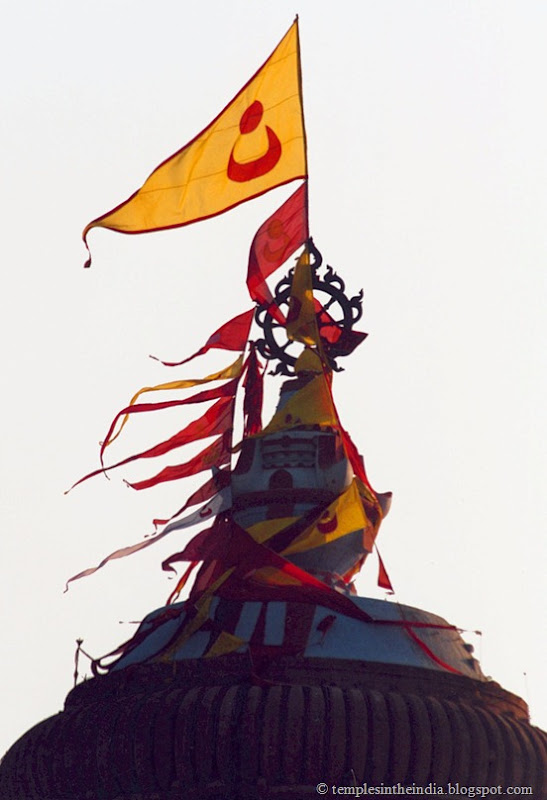
Daily Worship
- 05 A.M. : Dwara Pitha & Mangalal Alati
- 06 A.M. : Mailam
- 09 A.M. : Gopala Ballava Puja
- 1 1 A.M. : Madhynha Dhupa
Cultural Integrity
Shrikshetra of Puri Jagannath, as is commonly known, can verily be said to be a truthful replica of Indian culture. To understand this culture, one has to have some idea of the history of this land, which again is different from that of other countries of the world.Starting from Lord Jagannath himself, history has it that he was a tribal deity, adorned by the Sabar people, as a symbol of Narayan. Another legend claims him to be Nilamadhava, an image of Narayana made of blue stone and worshipped by the aboriginals. He was brought to Nilagiri (blue mountain) or Nilachala and installed there as Shri Jagannath in company with Balabhadra and Subhrdra. The images made of wood are also claimed to have their distant linkage with the aboriginal system of worshipping wooden poles. To cap it all the Daitapatis, who have a fair share of responsibilities to perform rituals of the Temple, are claimed to be descendants of the aboriginals or hill tribes of Orissa. So we may safely claim that the beginning of the cultural history of Shrikshetra is found in the fusion of Hindu and Tribal Cultures. This has been accepted as a facet of our proud heritage. The three deities came to be claimed as the symbols of Samyak Darshan, Samyak Jnana and Samyak Charita usually regarded as Triratha (of the Jain cult), an assimilation of which leads to Morsha (salvation) or the ultimate bliss...
Lord Jagannath is worshipped as Vishnu or Narayana or Krishna and Lord Balabhadra as Shesha. Simultaneously, the deities are regarded as the bhairava (Shiva the formidable) with Vimala (the bhairavi or the consort of Shiva) installed in the campus of the temple. So ultimately we find a fusion of Saivism, Shaktism and Vaishnavism of the Hindu religion with Jainism and up to an extent Buddhism in the culture of Jagannath and the cultural tradition so reverently held together in Shrikshetra.
Acharyas and Jagannatha Puri
All of the renowned acharyas except Madhvacharya have been known to visit this kshetra. Adi Shankara established his Govardhana matha here. A number of sites belonging to Ramanujacharya, Nimbarkacharya and Gaudiya Vaishnavism have also been established. Srimad Vallabhacharya has a "baithakji" here also, which he established on his visit to Puri. There is also evidence is that Guru Nanak, Kabir and Tulsidas had visited this place.Structure
The huge temple complex covers an area of over 400,000 square feet (37,000 m2), and is surrounded by a high fortified wall. This 20 feet (6.1 m) high wall is known as Meghanada Pacheri. Another wall known as kurma bedha surrounds the main temple. It contains at least 120 temples and shrines. With its sculptural richness and fluidity of the Oriya style of temple architecture, it is one of the most magnificent monuments of India.The temple has four distinct sectional structures, namely -- Deula, Vimana or Garba griha (Sanctum sanctorum) where the triad deities are lodged on the ratnavedi (Throne of Pearls). In Rekha Deula style;
- Mukhashala (Frontal porch);
- Nata mandir/Natamandapa, which is also known as the Jagamohana, (Audience Hall/Dancing Hall), and
- Bhoga Mandapa (Offerings Hall).
Daily Food Offerings
Daily offerings are made to the Lord six times a day. These include:- The offering to the Lord in the Morning that forms His breakfast and is called The Gopala Vallabha Bhoga.
- The Sakala Dhupa forms his next offering at about 10 O’ clock in the morning Sakala Dhupa. This generally consists of 13 items including the Enduri cake & Mantha puli.
- Bada Sankhudi Bhoga forms the next repast & the offering consists of Pakhala with dahi and Kanji payas. The offerings are made in the bhog mandapa, about 200 feet from the Ratna Vedi. This is called Chatra Bhog and was introduced by Adi Shankaracharya in the 8th century to help pilgrims share the temple food.
- The Madhyanha dhupa forms the next offering at the noon.
- The next offering to the Lord is made in the evening at around 8 o’clock it is Sandhya Dhupa.
- The last offering to the Lord is called the Bada Simhara Dhupa. Breakfast is a seven item treat — Khua, Lahuni, sweetened coconut grating, coconut water, and puffed rice sweetened with sugar known as khai and curd and bananas.
The Temple Kitchen & Mahaprasada

The temple's kitchen is considered as the largest kitchen in the world.Tradition maintains that all food cooked in the temple kitchens are supervised by the Goddess Mahalakshmi, the empress of Srimandir herself. It is said that if the food prepared has any fault in it a shadow dog appears near the temple kitchen. The temple cooks or Mahasuaras take this as a sign of displeasure of Mahalakshmi with the food which is promptly buried and a new batch cooked.All food is cooked following rules as prescribed by Hindu religious texts, the food cooked is pure vegetarian without using onions and garlic.Cooking is done only in earthen pots with water drawn from two special wells near the kitchen called Ganges and Yamuna. There are total 56 varieties of naivedhyas offered to the deities, near ratnavedi as well as in bhoga mandap on five particular muhurtas.The most awaited prasad is kotho bhoga or abadha, offered at mid-day at around 1 pm, depending upon temple rituals. The food after being offered to Jagannath is distributed at reasonable amount as Mahaprasad, which considered as divine to devotees in the Ananda Bazar located to the North-east of the Singhadwara inside the temple complex
Accommodation
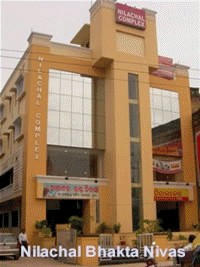
Puri, the land of Lord Jagannath is also well known for its pristine beaches, colourful festivals, and numerous points of tourist attraction. Every year millions of tourists from across the globe come here for leisure, pleasure and devotion.
The Jagannath Temple Administration, keeping in mind the needs of the devotees, has come up with “Nilachal Bhakta Nivas” a brand new guest house.
Right on the Grand Road and adjacent to the temple, the guest house has great locational advantages. It is only minutes away from the railway station, bus stop and the beach.
1. V.I.P. Suits - Rs. 950/-
2. Double Beded A/C Rooms - Rs. 800/-
3. Double Beded Non A/c - Rs. 400/-
4. Triple beded Non A/c - Rs. 600/-
5. 6 beded Dormitory - Rs. 600/-
6. 8 beded Dormitory - Rs. 800/-
# Taxes as applicable
Rates are subject to change. Please contact on Booking
The guesthouse offers 26 modern equipped A/C. Rooms and 2 nos. of VIP Suits, 24 hours hot & cold water, with TV. Other facilities include round the clock service, lift, banking, power backup and well managed security system.
The luxury of the guesthouse packed with advantages is available at an amazingly affordable price.
More over, when you stay here, you make a big contribution to the maintenance and development of the temple as a substantial portion from the earnings of the guesthouse will go to the temple as offering.
Prices may vary
For Booking Details Please contact :
Sri Jagannath Temple Office, Grand Road, Puri - 752 001
Phone : 222053 / 220 501
Cell : 9861444677, 94372 84108, 9938213839
Cell : 9861444677, 94372 84108, 9938213839
email : jagannath@ori.nic.in

There are many means of transportation available in Puri, and the main ones among these are cycle rickshaws, auto rickshaws and rented motorbikes.
Cycle Rickshaw
Cycle rickshaws are prevalent in Puri and these are the locally preferred mode of transport. Cycle rickshaws in Puri can charge you anywhere around Rs 10 to 20, depending on the distance traveled. Cycle rickshaws are quite slow, so opt for cycle rickshaws only if you have ample time in your hands. Cycle rickshaws are also the cheapest mode of transport.
Auto Rickshaw
Auto rickshaws in the city of Puri do not run on meter, and you should negotiate a prior rate before getting into one. Make sure you talk to the locals first and figure out what the actual rate will be, as this will help you avoid paying too much out of your pocket for a short trip. There are no separate night rates included, and travelling through an auto rickshaw is actually very safe. You can also reach your destination faster this way.
Rented Motorbike
You can rent out motorbikes in order to roam around Puri, and this can give an adventurous streak to your trip. Enfield motorbikes are available for rent for around Rs 400 to 500 per day, and the major locations in Puri are close by, so you can travel through the city without getting confused.
HOW TO REACH PURI
Kolkata to Puri 495 km
Howrah to Puri 502 km
Hyderabad to Puri 976 km
Nagpur to Puri 1029 km
Chennai to Puri 1279 km
BY TRAIN

City Name Railway Station Distance
Puri Puri (PURI) -
Bhubaneswar Bhubaneswar (BBS) 62 km
Trains to Puri (PURI)
Starting Station Train Arrival at Puri Service Days
Delhi (NDLS) Purshottam Exp 05:30 AM All Days
7more trains (12802) (duration: 31h 10m)
Nandan Kanan Ex 2:20 PM Mon,Wed,Thu (duration: 29h 50m) & Sat
Nandan Kanan Ex 2:20 PM Mon,Wed,Thu (duration: 29h 50m) & Sat
Ahmedabad (ADI) Adi Puri Exp 08:55 AM Mon, Thu, Sat
4 more trains (12844) (duration: 38h 55m) & Sun
4 more trains (12844) (duration: 38h 55m) & Sun
Adi Prri Exp 09:10 AM
(18406) (duration: 39h 10m)
Barabil (Brr) Bbn Puri Exp 08:35 PM All Days
1 more train (18415) (duration: 12h 15m)
1 more train (18415) (duration: 12h 15m)
Darbhanga Jn (DBG) Dbg Puri Exp 03:20 AM Sat
1 more train (18420) (duration: 20h 20m)
1 more train (18420) (duration: 20h 20m)
Digha (DGHA) Dgha PurirSup E 03:20 AM Sun
3 more trains (12579) (duration: 10h 5m)
3 more trains (12579) (duration: 10h 5m)
Dgha Prri Exp 03:20 AM Thu
(22877) (duration: 10h 5m)
(22877) (duration: 10h 5m)
Durg (DURG) Durg Puri Exp 09:35 AM All Days
11 more trains (18426) (duration: 17h 25m)
11 more trains (18426) (duration: 17h 25m)
Gandhidhar Bg Gimb Puri Exp 04:15 PM Fri
1 more train (12993) (duration: 41h 30m)
1 more train (12993) (duration: 41h 30m)
Guwahati (GHY) Ghy Prri Expres 03:20 AM Sun
9 more trains (15640) (duration: 32h 35m)
9 more trains (15640) (duration: 32h 35m)
Haridwar (HW) Kalingautkalexp 07:00 AM All Days
more train (18478) (duration: 49h)
Hatia (HTE) Tapaswini Exp 07:15 AM All Days
2 more trains (18451) (duration: 15h 10m)
more train (18478) (duration: 49h)
Hatia (HTE) Tapaswini Exp 07:15 AM All Days
2 more trains (18451) (duration: 15h 10m)
Howrah (HWH) Srijagannathexp 04:50 AM
32 more trains (18409) (duration: 9h 50m)
All Days
32 more trains (18409) (duration: 9h 50m)
All Days
Hwh Puri G Rath 05:55 AM Tue & Thu
(duration: 9h)
(duration: 9h)
Jodhpur (JU) Ju Puri Express 12:20 PM Sat
1more train (18474) (duration: 46h 5m)
1more train (18474) (duration: 46h 5m)
Kamakhya (KYQ)Kyq Puri Exp 08:00 AM Thu
7 more trains (15644) (duration: 32h 15m)
7 more trains (15644) (duration: 32h 15m)
Lokmanyatilak Ltt Puri Sup Ex 09:10 AM Thu
3 more trains (12745) (duration: 32h 55m)
3 more trains (12745) (duration: 32h 55m)
Okha (OKHA) Okha Puri Exp 10:45 AM Wed
(18402) (duration: 51h)
(18402) (duration: 51h)
Paradip (PRDP) Prdp Puri Exp 11:00 PM All Days
1 more train (18413) (duration: 5h)
1 more train (18413) (duration: 5h)
Patna (PNBE) B Nath Dham Exp 03:20 AM Wed
1 more train (18450) (duration: 18h 25m)
1 more train (18450) (duration: 18h 25m)
Rayagada Rgda Sbp Exp 07:15 AM All Days 3
more trains (18302) (duration: 16h 45m)
Sambalpur Sbp Puri Int Ex 12:50 PM All Days
16 more trains (18303) (duration: 6h 40m)
Sealdah (SDAH) Duronto Express 04:00 AM Mon, Wed & F
(22201) (duration: 8h)
16 more trains (18303) (duration: 6h 40m)
Sealdah (SDAH) Duronto Express 04:00 AM Mon, Wed & F
(22201) (duration: 8h)
Shalimar (SHM) Shm Puri Sf Exp 05:55 AM Wed 6
6 more trains (22835) (duration: 8h 55m)
6 more trains (22835) (duration: 8h 55m)
Surat (ST) Surat Puri Exp 04:15 PM Tue
9more trains (12744) (duration: 31h 45m)
9more trains (12744) (duration: 31h 45m)
Tirupati (TPTY) Tpty Puri Exp 02:50 PM Mon, Tue, Wed, Fri & Sat
6 more trains (17480) (duration: 28h 15m)
Valsad (BL) Bl Puri S F Ex 10:15 AM Thu
1 more train (12583) (duration: 38h 35m)
happy temple yatra
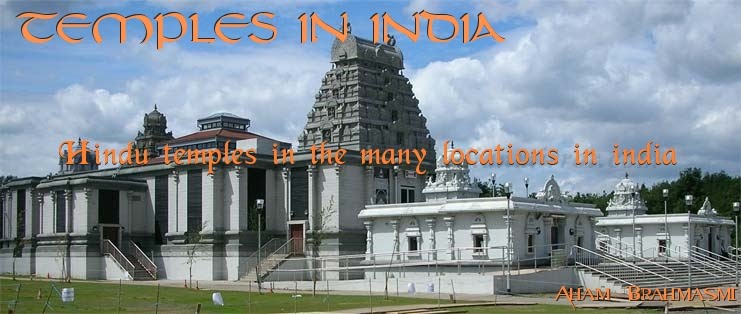
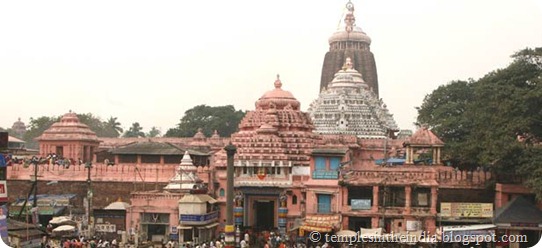
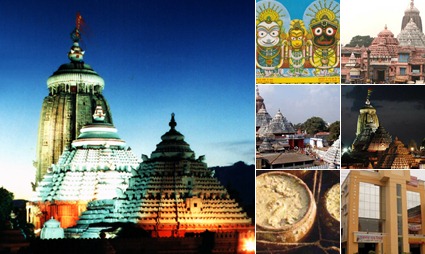
nice post from this blog,this one interesting
ReplyDelete